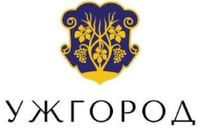Uzhhorod: Zakarpattia's Borderland Beacon of Resilience and Renewal

Tucked along the Uzh River where Ukraine's western frontier kisses Slovakia and Hungary, Uzhhorod stands as Zakarpattia's cultural and administrative crown jewel—a city of 115,000 souls blending Carpathian folklore with European flair. As the oblast's hub, this 1,000-year-old settlement has weathered empires, from medieval Slavic roots to Soviet shadows, emerging as a haven amid the ongoing war. In 2025, with cherry blossoms fading into autumn hues and EU aspirations blooming, Uzhhorod's news cycle pulses with stories of healing, connectivity, and quiet defiance. For residents and visitors, it's not just headlines; it's the rhythm of a region that's become Ukraine's "western rear"—a sanctuary hosting over 145,000 internally displaced persons (IDPs) while eyeing brighter horizons.
Uzhhorod's allure lies in its layered identity: a mosaic of Ukrainians, Hungarians, Slovaks, and Rusyns, where wooden synagogues whisper of lost Jewish communities and sakura-lined streets host spring festivals. The city's temperate climate—mild Octobers averaging 10-15°C—draws eco-tourists to nearby trails, but recent news underscores its role as a wartime anchor. Since Russia's full-scale invasion in 2022, Zakarpattia has seen just one missile strike, transforming Uzhhorod into a refuge without curfews. Real estate booms here, with prices surging as Kyiv elites snap up properties; menus at cozy eateries like those in the old town have hiked too, reflecting inflation's bite. Yet, amid economic strains, community thrives: from farmers' markets brimming with Polissia honey to tech startups leveraging the oblast's IT export surge.
October 2025's headlines spotlight progress on multiple fronts. Fresh off the EU screening process—a key milestone for Ukraine's membership bid—European Commissioner for Enlargement Marta Kos wrapped a three-day visit on October 1, touching down in Uzhhorod to champion reforms. She toured schools for Hungarian and Slovak minorities, emphasizing inclusive education in multilingual Zakarpattia, then rode the newly inaugurated Uzhhorod-Chop railway—Ukraine's first Euro-gauge line linking to three European capitals. This €100 million project, backed by EU funds, slashes travel times and bolsters trade via the Middle Corridor, easing logistics for the region's wine exports and mineral deals. "It's about weaving Ukraine into Europe's fabric," Kos noted, amid talks on judicial tweaks and anti-corruption drives vital for accession.
War's scars linger, but Uzhhorod counters with compassion. The city's first psychosocial support center, opened in January with EU and UNDP backing, has served 64 communities, offering therapy to IDPs, veterans, and bereaved families. Costing $72,000, it's part of First Lady Olena Zelenska's "How Are You?" initiative, providing tools like mindfulness sessions tailored to Carpathian winters. President Zelenskyy visited wounded warriors at a local clinic in late 2024, awarding state honors to defenders from Donetsk and Kharkiv fronts—a poignant reminder of Zakarpattia's role in national healing. On the darker side, May reports exposed domestic horrors: a 70-year-old man in nearby Bilky chaining his wife for 10 days, sparking a police probe and criminal case. Meanwhile, SBU cyber units busted a Uzhhorod "call center" scamming EU residents via copyright, netting millions in extorted funds.
Cultural revival adds vibrancy. In September, a memorandum sealed plans to relocate and restore a 20th-century wooden synagogue from Velyki Komyaty village to the Zakarpattia Museum—a 2025 project blending Hungarian consulate support, Uzhhorod's rabbi, and local architects for authentic reconstruction. This echoes Uzhhorod National University's launch of a Holocaust remembrance project, exploring how genocide reshaped postwar memory in the region—once home to 85,000 Jews, now a modest community with a repurposed synagogue as a concert hall. Education buzzes too: The university honored Slovak academic Jan Buleca with a Doctor Honoris Causa, while an Indian ambassador visit scouts opportunities for South Asian students, diversifying the oblast's 1.25 million-strong populace.
Infrastructure leaps forward, mirroring Ukraine's European pivot. From October 10, Ukrzaliznytsia rolls out a daily Kyiv-Bucharest train via Moldova, funneling passengers through Uzhhorod's revamped hubs and boosting Zakarpattia's logistics. Locally, scandals simmer: A former Uzhhorod council director and appraiser face trial for undervaluing ex-plant land at UAH 16.7 million (versus UAH 86.3 million market value). On a lighter note, the State Bureau of Investigation cleared probes into a mobilized ethnic Hungarian's death, countering manipulation claims.
Social media captures the human pulse. Recent X posts news Zakarpattia from Uzhhorod's library highlight a September 29 conference marking its 80th anniversary, uniting national peers on libraries' transformative role in Zakarpattia. Threads buzz with tourism tips—hiking Uzhhorod Castle trails or savoring bograch stew—amid 2025's rebound, with top spots like the amphitheater and philharmonia ranking high. As autumn settles, whispers of 2025's Sakura Fest prep (likely late April) tease spring's return, when 1,000 cherry trees paint the city pink.
In Zakarpattia, where chalk cliffs meet the Tisza, Uzhhorod embodies quiet fortitude—a bridge between past pogroms and future EU stars. From rail whistles to restored synagogues, October's news weaves war-weariness with wary optimism. As Zelenskyy pushes reconstruction, this border gem reminds: resilience isn't just survival; it's sakura in winter's Uzhgorod wait.